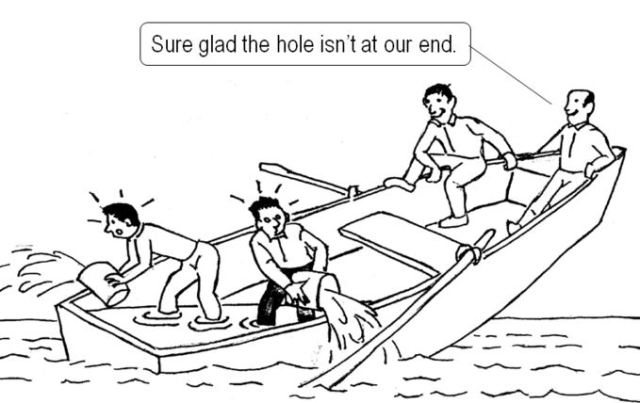When I work with leaders, I always find that an interesting question to ask. Although I don’t have the proven statistics to support what I am about to say, but my experience tells me that approximately 80% would hesitate to answer the question with an absolute “Yes”. That hesitation says it all!
Mostly I get a qualified “Yes” – and the follow on comments fall mainly in 2 categories:
- “They are the right people but they are not working together efficiently”, and
- “I have one (or two!) who are just not performing, and they have not done so for a while”
In this article I want to address #2. I’m not ignoring #1 but the focus of this piece is on the second one.
Recently, I started working with a CEO who has been in the role a couple of years and I asked him – let’s call him James – this very question about his direct team. James’ response was along the lines of – “Tom (again not his real name!) is just not performing, and he hasn’t for years. But he has been in this organisation for quite a while and he carries a lot of knowledge that is valuable”.
That response is not as uncommon as you might think! It is often followed up with – “well, what can you do with someone who has been in the organisation for that long!!”
You see, people like Tom become institutions in companies and even though everyone knows that Tom under performs, it has always been like that, and thus becomes accepted and almost institutionalised.
But, if you want a high performance team and organisation, and James definitely wants – and needs – one to deliver on his promises on to shareholders, then Tom can derail all of that.
And I am not exaggerating!! Let me explain.
The issues about Tom are:
- His under-performance as a member of the senior management team – that in itself is a huge issue. You cannot have a high-performing team if you are carrying passengers.
- The fact that this has been going on for quite some time – what message is that sending?
- Tom is ineffective and consequently Tom’s own team are suffering and under-performing
- Under performance is accepted in the organisation, so why bother performing?
- This tolerance is undermining James as a leader, and thus his effectiveness.
Now, I know that tackling a long-serving member of a team is complex – and can be expensive.
I did ask James what he had done about Tom’s performance and he had done quite a lot – including coaching and training – but none of it worked.
However, tolerating it is hugely damaging to James, his team and the business.
So, this is the tough part of being a leader – you either remove Tom or find him another role where he can contribute. I know that this sounds very simplistic and I do not, for a second, underestimate the challenge of removing someone with long standing service. I have had to do this in the past in my own corporate career, and I know how difficult and challenging it is.
But it is the right thing to do! And, from my experience the reality of doing it is frequently not as tough as the prospect of doing it. I have come across times when doing so is a relief to the under performer. But, truthfully, I have had the opposite too when it has been tough.
But, as a leader, you must take this sort of decisive action. These are the tough decisions that leaders are paid for – and if you wish to have credibility as a leader of people, then this falls within your bailiwick!!
Be interested in your thoughts.
Are you ready to be a great leader?
10 Key Traits of Top Business Leaders
These 10 Key Traits of Top Business Leaders can set you on your journey to lasting success! Click HERE to download. |
